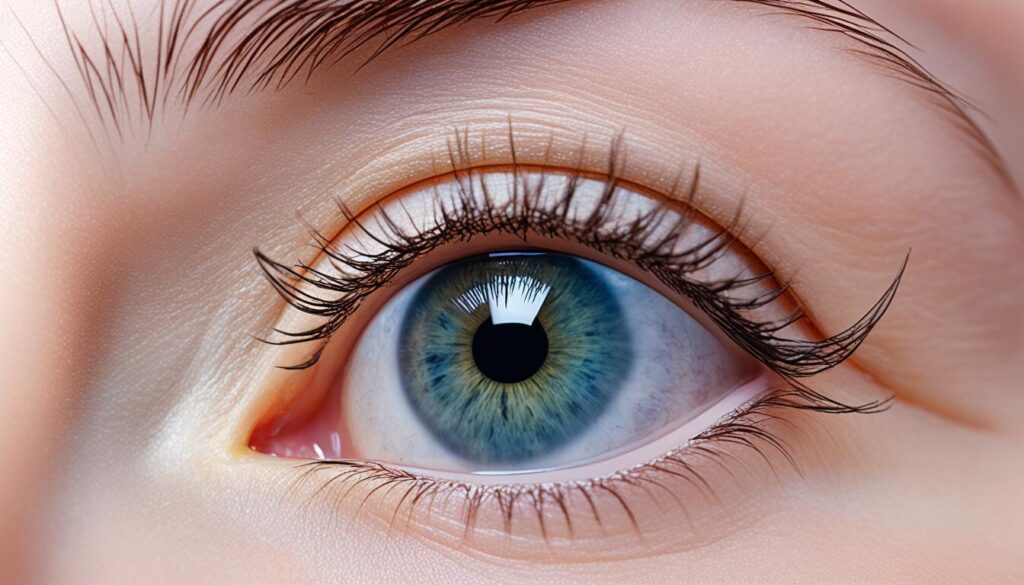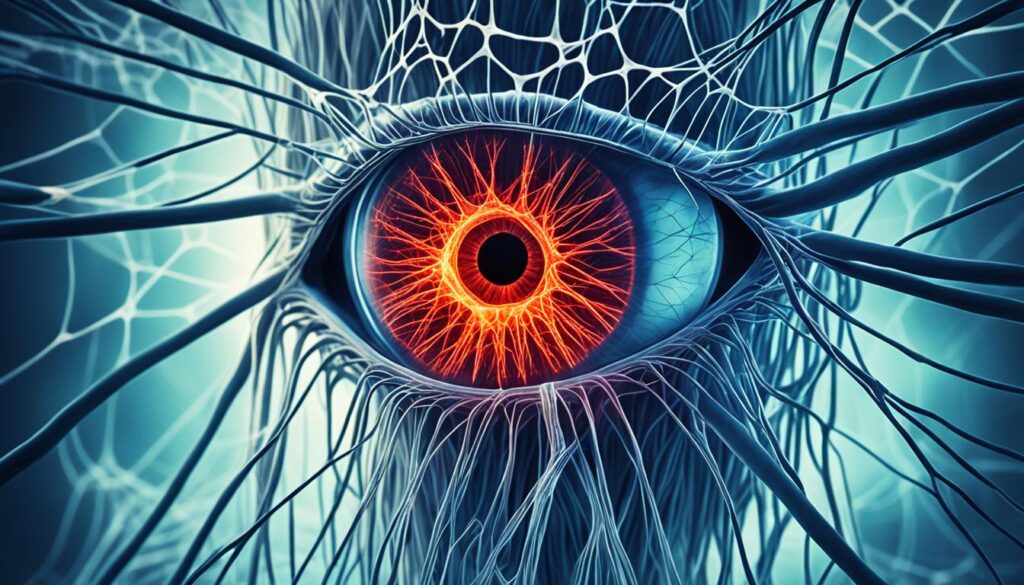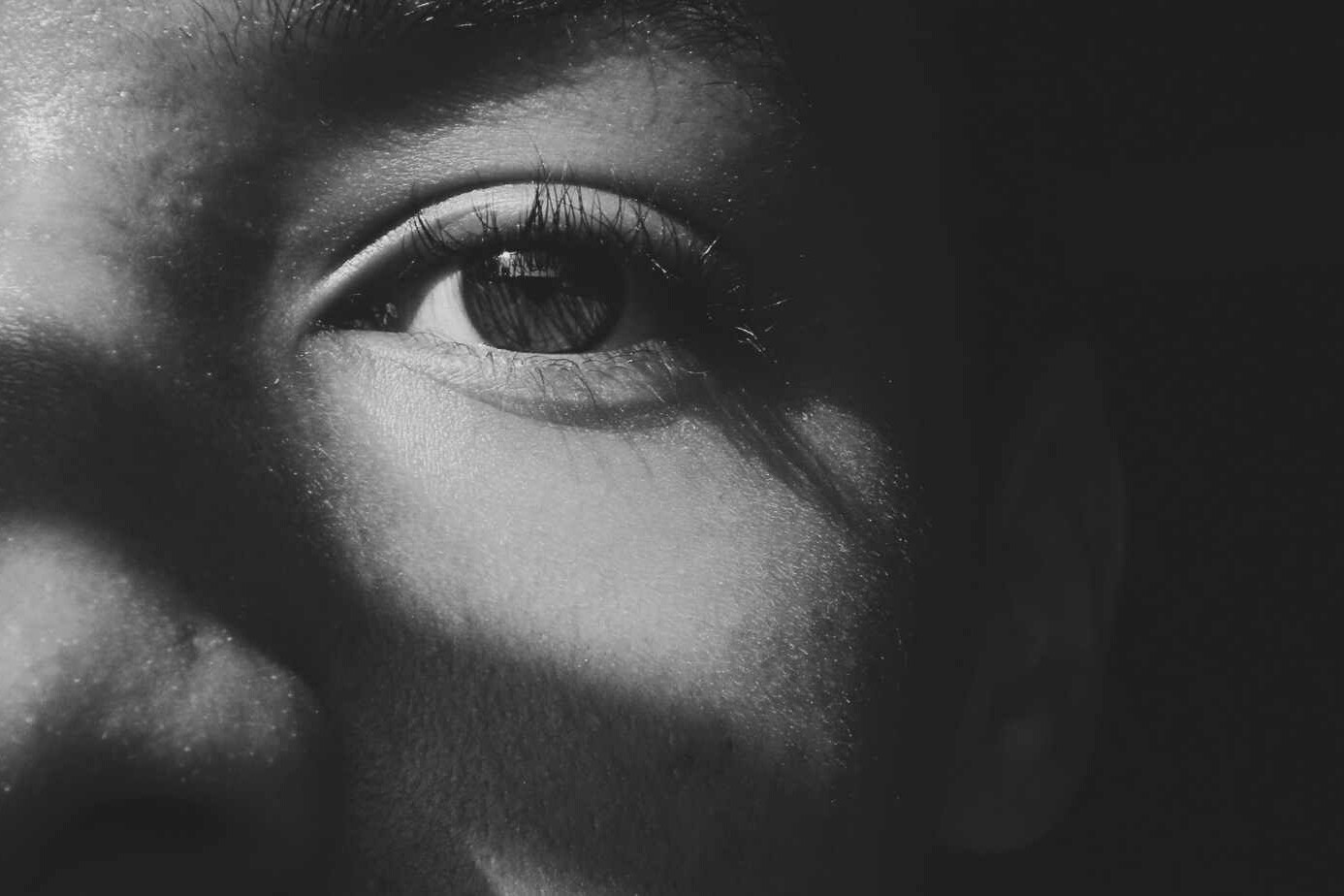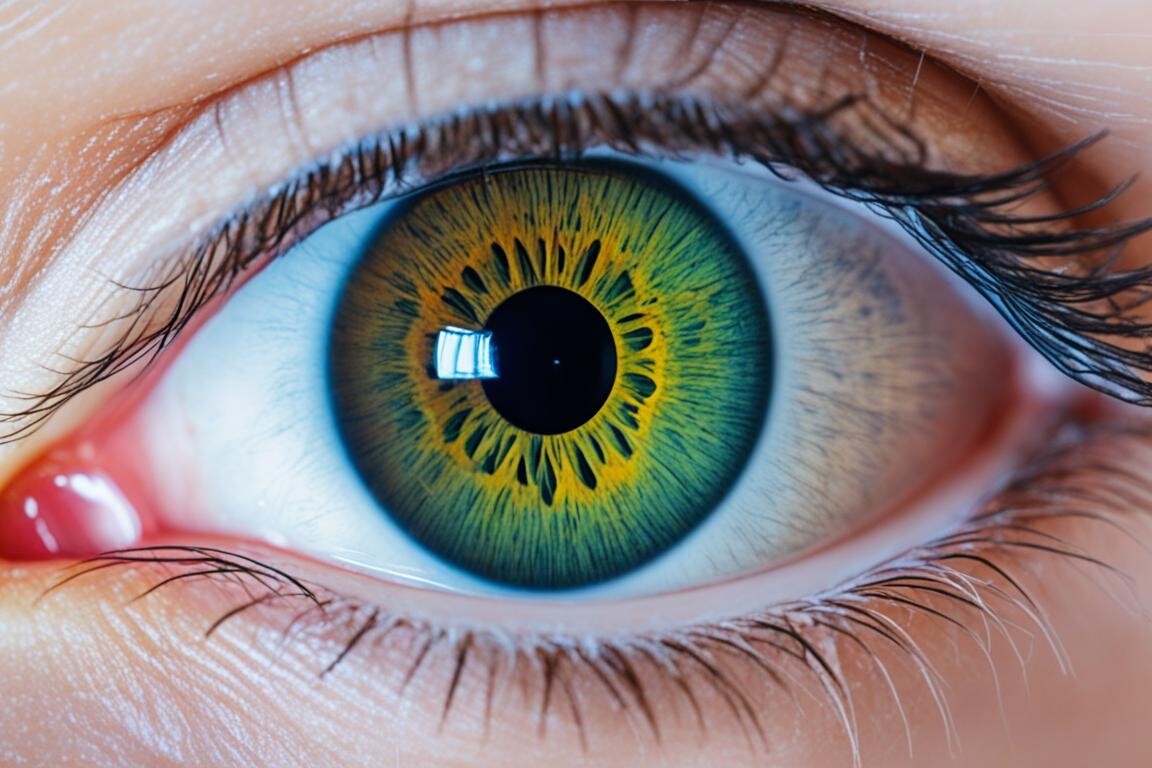If you’ve been experiencing involuntary spasms or twitching of your eyelid, you may be suffering from a condition known as Benign Essential Blepharospasm (BEB). This neurological disorder, which primarily affects middle-aged and older women, can cause increased blinking, eye irritation, difficulty keeping your eyelids open, sensitivity to light, and even functional blindness. The spasms usually occur during the day and disappear during sleep. It is important to understand the symptoms and care options available to manage this condition effectively.
Key Takeaways:
- Benign Essential Blepharospasm (BEB) is a neurological disorder characterized by involuntary spasms or twitching of the eyelid.
- BEB is more common in middle-aged and older women.
- Symptoms of BEB include increased blinking, eye irritation, difficulty keeping the eyelids open, sensitivity to light, and functional blindness.
- Treatment options for BEB include botulinum toxin shots, medication, or surgery.
Table of Contents
ToggleWhat is Benign Essential Blepharospasm?
Benign Essential Blepharospasm is a neurological disorder that causes involuntary spasms or twitching of the eyelid. It falls under the category of dystonia, which is a movement disorder characterized by muscle contractions and repetitive movements.
The exact cause of Benign Essential Blepharospasm (BEB) is unknown, but it is believed to be a multifactorial condition that may result from a combination of genetic and environmental factors. BEB predominantly affects middle-aged and older women.
Common symptoms of BEB include increased blinking, eye irritation, difficulty keeping the eyelids open, sensitivity to light, and functional blindness. These spasms primarily occur during the day and tend to disappear during sleep.

| Symptoms of Benign Essential Blepharospasm | Frequency |
|---|---|
| Increased blinking | Daily |
| Eye irritation | Daily |
| Difficulty keeping the eyelids open | Daily |
| Sensitivity to light | Daily |
| Functional blindness | Daily |
Clinical Trials for Benign Essential Blepharospasm
Participating in clinical trials is a valuable opportunity for clinicians and scientists to gain a better understanding of benign essential blepharospasm (BEB) and improve care for individuals affected by this condition. Clinical trials are research studies designed to explore innovative methods of detecting, treating, and preventing diseases.
All types of volunteers, including both healthy individuals and those with an illness or disease, are needed to participate in clinical trials. By joining a clinical trial for BEB, you not only contribute to the advancement of medical knowledge but also have the chance to receive new and upcoming treatment options.
To explore clinical trial opportunities for BEB, you can visit reputable websites such as NIH Clinical Research Trials and You and Clinicaltrials.gov. These platforms provide comprehensive information on ongoing clinical trials, including eligibility criteria, study objectives, and contact details for enrollment.
By actively participating in clinical trials, you become part of a collaborative effort to enhance the care and management of BEB, ultimately contributing to improved outcomes and quality of life for individuals living with this condition.

| Benefits of participating in clinical trials for BEB | Risks and considerations |
|---|---|
|
|
Causes and Risk Factors of Benign Essential Blepharospasm
Benign Essential Blepharospasm (BEB) is a neurological disorder characterized by involuntary spasms or twitching of the eyelid. While the exact cause of BEB is unknown, it is believed to be multifactorial, potentially caused by a combination of genetic and environmental factors.
Dysfunction of the basal ganglia, a region of the brain involved in motor and learning functions, may play a role in the development of BEB. The basal ganglia helps control voluntary movements, and any disruption in its function can lead to abnormal muscle contractions and spasms.
Some cases of BEB may have a genetic component, although more research is needed to understand the specific role of genetics in its development. Certain genetic mutations or variations could predispose individuals to develop BEB.
There are also risk factors that can increase the likelihood of developing BEB. These include:
- Head or facial trauma: Previous head or facial injuries can contribute to the development of BEB.
- Family history: Having a family history of dystonia or tremor disorders can increase the risk of developing BEB.
- Medications: Certain medications used to treat Parkinson’s disease, such as dopamine agonists, have been associated with an increased risk of developing BEB.
It’s important to note that having one or more of these risk factors does not guarantee the development of BEB. The onset of the condition can vary from person to person, and further research is needed to understand the complex interplay between genetics, environmental factors, and the development of BEB.
It’s crucial for individuals experiencing symptoms of BEB to consult with a healthcare professional for an accurate diagnosis and appropriate management.

Diagnosis of Benign Essential Blepharospasm
The diagnosis of benign essential blepharospasm is based on a thorough clinical evaluation and a detailed patient history. It involves a physical examination and careful observation of involuntary contractions of the eyelids during a spasm episode. While there are no specific laboratory tests for diagnosing BEB, these examinations are crucial in making an accurate diagnosis.
The diagnosis of BEB is often a clinical diagnosis and a diagnosis of exclusion, meaning other causes of abnormal eyelid movements need to be ruled out. This ensures that the symptoms are not indicative of another underlying condition. It is essential to differentiate BEB from other movement disorders such as Meige syndrome, hemifacial spasm, and facial tics through a process called differential diagnosis.
Diagnostic Process for Benign Essential Blepharospasm:
- Thorough clinical evaluation
- Detailed patient history
- Physical examination
- Observation of involuntary eyelid contractions during a spasm episode
- Rule out other causes of abnormal eyelid movements
- Differential diagnosis with other movement disorders
It is important to note that diagnosing BEB requires the expertise of a healthcare professional, typically a neurologist or ophthalmologist, who specializes in movement disorders. Seeking medical advice and undergoing the necessary evaluations is crucial in obtaining an accurate diagnosis.
| Diagnostic Process for Benign Essential Blepharospasm | |
|---|---|
| Thorough clinical evaluation | |
| Detailed patient history | |
| Physical examination | |
| Observation of involuntary eyelid contractions during a spasm episode | |
| Rule out other causes of abnormal eyelid movements | |
| Differential diagnosis with other movement disorders |
Diagnosing benign essential blepharospasm plays a crucial role in determining the appropriate treatment approach and management plan for the individual. If you believe you may be experiencing the symptoms of BEB, it is important to consult a healthcare professional for a proper evaluation and diagnosis.
Treatment Options for Benign Essential Blepharospasm
When it comes to managing benign essential blepharospasm (BEB), there are several treatment options available. These options aim to alleviate symptoms and improve the quality of life for individuals living with this neurological disorder. It’s important to work closely with a healthcare professional to determine the most suitable treatment approach for your specific condition.
Medical Therapy
Medical therapy is one avenue for managing the symptoms of BEB. Muscle relaxants and sedatives may be prescribed to help reduce spasms and control involuntary eyelid movements. However, it’s important to note that the effectiveness of oral medications in treating BEB is limited.
Botulinum Toxin Injections
Botulinum toxin injections, commonly known as Botox, are the primary form of treatment for BEB. Botox works by weakening the muscles responsible for eyelid spasms, resulting in a reduction of involuntary movements. The injections are typically administered every 3-4 months and can provide temporary relief from symptoms.
It’s worth noting that Botox injections require expertise and should be performed by a qualified healthcare professional. The procedure is generally well-tolerated, and any potential side effects or risks should be discussed with your healthcare provider.
Surgical Options
In severe cases where other treatment methods have proven ineffective, surgery may be considered as a last resort for managing BEB. One surgical option is myectomy, which involves the removal of selected eyelid muscles to reduce spasms. Surgical intervention is typically reserved for individuals who experience significant impairment in their daily lives due to the condition.
Treatment Options for Benign Essential Blepharospasm
| Treatment Option | Description |
|---|---|
| Medical Therapy | Oral medications such as muscle relaxants and sedatives may be used to manage symptoms; however, their effectiveness is limited. |
| Botulinum Toxin Injections (Botox) | Injections of botulinum toxin weaken the muscles responsible for eyelid spasms, providing temporary relief from symptoms. Repeat injections are necessary every 3-4 months. |
| Surgery | In severe cases where other treatments fail, surgical options such as myectomy, involving the removal of selected eyelid muscles, may be considered. |
It’s important to remember that treatment options may vary for each individual, depending on the severity of their symptoms and their response to different approaches. Consulting with a healthcare professional is key to determining the most suitable treatment plan for your specific needs.

Complications and Prognosis of Benign Essential Blepharospasm
Individuals with benign essential blepharospasm may experience certain complications associated with the condition. These complications can include:
- Bruising
- Blepharoptosis (droopy eyelid)
- Ectropion (outward turning of the eyelid)
The prognosis for individuals with benign essential blepharospasm can vary. While some may experience mild symptoms that can be effectively managed with treatment, others may have more severe symptoms that significantly impact their daily lives.
Regular follow-up appointments and reinjection of botulinum toxin play a crucial role in managing benign essential blepharospasm and improving the prognosis for affected individuals.
Complications of Benign Essential Blepharospasm
There are several possible complications associated with benign essential blepharospasm:
| Complication | Description |
|---|---|
| Bruising | Some individuals may experience bruising around the injection site after receiving botulinum toxin injections. This is a common and temporary side effect. |
| Blepharoptosis | Blepharoptosis, or droopy eyelid, can occur as a result of weakened eyelid muscles or incorrect placement of botulinum toxin injections. |
| Ectropion | Ectropion refers to the outward turning of the eyelid, which can affect the function and appearance of the eye. It may occur as a result of muscle weakness or contraction imbalances caused by benign essential blepharospasm. |
Prognosis of Benign Essential Blepharospasm
The prognosis for individuals with benign essential blepharospasm varies depending on the severity of their symptoms and the effectiveness of treatment.
Some individuals may experience milder symptoms that can be effectively managed, allowing them to lead relatively normal lives. With regular follow-up care, proper management, and treatment, these individuals may have a favorable prognosis.
On the other hand, individuals with more severe symptoms may face significant challenges in their daily lives. Severe eyelid spasms can interfere with their vision, making it difficult to perform everyday tasks.
It’s important for individuals with benign essential blepharospasm to work closely with their healthcare providers to find the most effective treatment options and management strategies for their specific needs.
Resources for Benign Essential Blepharospasm Information
When it comes to finding reliable information about benign essential blepharospasm (BEB), several resources can provide valuable insights and support. Whether you are someone personally affected by BEB or a healthcare professional seeking knowledge on the condition, the following resources can offer valuable information:
- Genetic and Rare Diseases Information Center (GARD): GARD is a credible source of information on rare diseases, including BEB. It provides comprehensive resources, including articles, publications, and support networks, to help individuals better understand and manage this condition.
- PubMed: As a well-known database of scientific articles, PubMed can be a valuable resource for accessing research papers and studies related to BEB. It offers in-depth information on the latest advancements, treatment options, and diagnostic approaches.
- NINDS Publication Catalog: The National Institute of Neurological Disorders and Stroke (NINDS) provides free printed materials through its publication catalog. It includes brochures and informational materials specifically dedicated to neurological disorders, including BEB. These resources can be useful for both patients and healthcare professionals.
- Clinicaltrials.gov: This website serves as a comprehensive database of ongoing clinical trials across the world. By visiting Clinicaltrials.gov, individuals can find information about clinical trials related to BEB. Participating in clinical trials not only provides an opportunity to contribute to research but also offers access to new and emerging treatment options.
- NIH Clinical Research Trials and You: This website, launched by the National Institutes of Health (NIH), provides a user-friendly interface to search for clinical trials in various medical fields. It’s a valuable resource for those interested in participating in BEB-related clinical trials.
These resources offer reliable information, support networks, and the latest advancements in the field of benign essential blepharospasm. Whether you are seeking information for personal knowledge or professional development, exploring these resources can provide valuable insights and empower you to make informed decisions.
Disorders with Similar Symptoms to Benign Essential Blepharospasm
While benign essential blepharospasm (BEB) is a distinct neurological disorder, there are other conditions that can present similar symptoms. These disorders may share common manifestations such as involuntary eyelid spasms, blinking abnormalities, and facial muscle involvement. Accurate diagnosis through differential diagnosis is crucial to identify and differentiate BEB from these conditions:
- Meige Syndrome: Meige syndrome is a rare neurological disorder characterized by involuntary spasms of the facial muscles, including the eyelids. These spasms can result in forceful eye closure, blepharospasm, and other facial movements.
- Bell’s Palsy: Bell’s palsy is a condition that causes temporary facial paralysis, often affecting one side of the face. Although blepharospasm is not a defining symptom, involuntary eye closure and weakening of the facial muscles can occur.
- Dystonia: Dystonia is a movement disorder characterized by sustained muscle contractions, resulting in abnormal movements and postures. It can affect various body regions, including the face and eyes.
- Hemifacial Spasm: Hemifacial spasm is a condition characterized by involuntary twitching or contractions of one side of the face. It commonly affects the eyelid and can cause the eye to close involuntarily.
These conditions may require different management approaches and treatment strategies compared to benign essential blepharospasm. Therefore, it is essential to consult a healthcare professional for accurate diagnosis and appropriate management.
Management of Benign Essential Blepharospasm
When it comes to managing benign essential blepharospasm, there are several treatment options available. These include medical therapy, botulinum toxin injections, and surgical interventions. The choice of treatment depends on the severity of symptoms and individual patient characteristics.
Medical Therapy:
Medical therapy may involve the use of oral medications to help manage the symptoms of benign essential blepharospasm. Muscle relaxants and sedatives are commonly prescribed to reduce the frequency and severity of eyelid spasms. However, it is important to note that the effectiveness of these medications may be limited.
Botulinum Toxin Injections:
Botulinum toxin injections, such as Botox, are considered the primary treatment for benign essential blepharospasm. The toxin is injected into the affected muscles, temporarily weakening them and reducing spasms. Regular follow-up and reinjections are necessary to maintain symptom relief, typically every 3-4 months.
Surgical Options:
In severe cases where other treatment options have been ineffective, surgical interventions may be considered. One such option is myectomy, a surgical procedure in which a portion of the eyelid muscles is removed. This can help alleviate the symptoms of benign essential blepharospasm, but it is important to discuss the potential risks and benefits with a qualified healthcare professional.
Management Summary:
To summarize, the management of benign essential blepharospasm involves a multimodal approach. Medical therapy, such as oral medications, may be used to alleviate symptoms. However, the primary treatment option is botulinum toxin injections, which provide temporary relief from spasms. For severe cases, surgical interventions like myectomy may be considered. Regular follow-up and reinjections are necessary to effectively manage symptoms and improve the quality of life for individuals with benign essential blepharospasm.
For a comprehensive overview of the management options available for benign essential blepharospasm, refer to the table below:
| Treatment Option | Description |
|---|---|
| Medical Therapy | Oral medications, such as muscle relaxants and sedatives, may be prescribed to manage symptoms. |
| Botulinum Toxin Injections | Primary treatment option, involves injecting botulinum toxin into affected muscles to weaken them and reduce spasms. |
| Surgical Options | Myectomy, a surgical procedure to remove a portion of the eyelid muscles, may be considered for severe cases. |
Conclusion
Benign essential blepharospasm is a neurological disorder that causes involuntary spasms or twitches of the eyelid. This condition can significantly impact the quality of life for affected individuals, causing discomfort and difficulty performing daily activities. However, there are treatment options available to manage the symptoms of benign essential blepharospasm.
Medical therapy, such as oral medications, can be used to alleviate the spasms, but their effectiveness may be limited. Botulinum toxin injections, also known as Botox, are the primary form of treatment for benign essential blepharospasm. These injections weaken the muscles in the eyelids, reducing the frequency and severity of spasms. Regular follow-up and reinjections of botulinum toxin are necessary to manage the symptoms.
In severe cases where other treatments are ineffective, surgical options such as myectomy, the removal of some eyelid muscles, may be considered. It is essential for individuals with benign essential blepharospasm to have regular follow-up and management to ensure proper care.
Participating in clinical trials can also provide opportunities for individuals with benign essential blepharospasm to contribute to research and help improve care. Clinical trials aim to find better ways to detect, treat, and prevent diseases like BEB. By participating in these trials, individuals can access new treatment options and potentially contribute to advancements in the field.
FAQ
What is benign essential blepharospasm?
Benign Essential Blepharospasm (BEB) is a neurological disorder that causes involuntary spasms or twitching of the eyelid. It is a form of dystonia, which is a movement disorder characterized by muscle contractions and repetitive movements.
What are the symptoms of benign essential blepharospasm?
Symptoms of benign essential blepharospasm include increased blinking, eye irritation, difficulty keeping the eyelids open, sensitivity to light, and functional blindness. The spasms usually occur during the day and disappear during sleep.
How can participating in clinical trials help with benign essential blepharospasm?
Participating in clinical trials can help clinicians and scientists learn more about benign essential blepharospasm and improve care for affected individuals. Clinical trials are research studies that aim to find better ways to detect, treat, or prevent diseases. All types of volunteers, including healthy individuals and those with an illness or disease, are needed for clinical trials. Clinical trials provide an opportunity for patients to receive new and upcoming treatment options.
What are the causes and risk factors of benign essential blepharospasm?
The exact cause of benign essential blepharospasm is unknown. It is believed to be multifactorial, potentially caused by the interaction of genetic and environmental factors. Dysfunction of the basal ganglia, a region of the brain involved in motor and learning functions, may play a role in the development of BEB. Risk factors for BEB include head or facial trauma, family history of dystonia or tremor, and certain medications used to treat Parkinson’s disease.
How is the diagnosis of benign essential blepharospasm made?
The diagnosis of benign essential blepharospasm is made based on a thorough clinical evaluation and a detailed patient history. Physical examination and observation of involuntary eyelid contractions during a spasm episode are important for diagnosis. There are no specific laboratory tests for diagnosing BEB. The diagnosis is often a clinical diagnosis and a diagnosis of exclusion, ruling out other causes of abnormal eyelid movements. Differential diagnosis includes other movement disorders such as Meige syndrome, hemifacial spasm, and facial tics.
What are the treatment options for benign essential blepharospasm?
Treatment options for benign essential blepharospasm include botulinum toxin shots, medication, or surgery. Oral medications such as muscle relaxants and sedatives may be used to manage symptoms, but their effectiveness is limited. Botulinum toxin injections, commonly known as Botox, are the primary form of treatment for BEB. Botulinum toxin weakens the eyelid muscles and reduces spasms. The injections need to be repeated every 3-4 months. In severe cases where other treatments are ineffective, surgical options such as myectomy may be considered.
What are the complications and prognosis of benign essential blepharospasm?
Complications associated with benign essential blepharospasm may include bruising, blepharoptosis (droopy eyelid), and ectropion (outward turning of the eyelid). The prognosis for individuals with BEB varies. Some may experience mild symptoms that can be managed with treatment, while others may have more severe symptoms that significantly impact their daily lives. Regular follow-up and reinjection of botulinum toxin are important for managing BEB.
Where can I find resources for benign essential blepharospasm information?
Additional information about benign essential blepharospasm can be found from resources such as the Genetic and Rare Diseases Information Center (GARD) and PubMed. The NINDS Publication Catalog offers free printed materials on neurological disorders, including BEB, for patients and healthcare professionals.
What are some disorders with similar symptoms to benign essential blepharospasm?
Meige syndrome, a rare neurological disorder characterized by spasms of the facial muscles including the eyelids, can have symptoms similar to BEB. Bell’s palsy, dystonia, hemifacial spasm, and other movement disorders may also have overlapping symptoms with BEB. Differential diagnosis is important to accurately diagnose and differentiate BEB from other conditions.
How is the management of benign essential blepharospasm carried out?
Management of benign essential blepharospasm includes medical therapy, botulinum toxin injections, and surgical options. Botulinum toxin injections are the primary treatment, providing temporary relief from spasms. Regular follow-up and reinjections are necessary to manage symptoms. For severe cases, surgical options such as myectomy may be considered.
Source Links
About The Author

This article is medically reviewed by Dr. Chandril Chugh, Board-Certified Neurologist, providing expert insights and reliable health information.
Dr. Chandril Chugh is a U.S.-trained neurologist with over a decade of experience. Known for his compassionate care, he specializes in treating neurological conditions such as migraines, epilepsy, and Parkinson’s disease. Dr. Chugh is highly regarded for his patient-centered approach and dedication to providing personalized care.
→ Book a consultation to discover which remedies suit your needs best.




